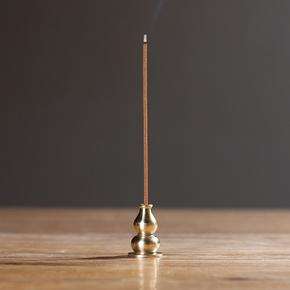What are the methods for making incense sticks
The commonly used adhesive powder (commonly known as elm bark powder) is used to bond the aggregates together, making the resulting product strong, elastic, and not easily broken. The quality of elm bark powder is also different. The proportion of adhesive powder and aggregate is approximately 1:1-1:2 (depending on the data). Corn starch can also be added.
There are various spices used for fragrance, such as sandalwood, agarwood, etc. There can also be various spices found in traditional Chinese medicine, such as star anise and fennel. Various essence are commonly used. The cost difference of different spices is quite significant. Most of them are prepared with various essence. The use of essence can produce a variety of people's favorite smells, which is no less than or better than spices and Chinese herbal spices. Because some essence is extracted from natural spices. But when it comes to the quality of fragrance, compared to spices and herbal fragrances, it is probably far behind.

There are various colors of pigments (see pigment information) commonly used, such as rose essence, bright red, tender yellow, green, gold powder, etc. There are no special requirements for pigments, and there are also natural flavors without added pigments. Furthermore, in order to improve quality or reduce costs, producers add some trace substances such as Lingguang powder, gold tablets, calcium carbonate, potassium nitrate, etc.
Water is essential in making incense. Although water cannot be considered as a material, it plays an important role in the fragrance making process. Only after exposure to sunlight, drying, and removing moisture can the fragrance be considered as a product. But in the process of making incense, water is indispensable. In the mixing material, the amount of water accounts for about 40% -60%, which varies greatly depending on the type of fragrance, the process of making the fragrance, the nature of the materials (water content), climate, equipment, and other factors.
Article source: Incense manufacturerhttp://www.dongfangxl.com/
-
09-30
What are the structures of bamboo stick incense?
Bamboo stick incense, also known as string incense, stick incense, or standing incense in Taiwan, and bamboo stick incense in mainland China, is named after its use of bamboo branches, cinnamon bamboo
-
09-30
Incense Manufacturer: Craftsmanship for Making Bamboo Stick Incense
The ancients discovered that any type of spice has the effects of refreshing and calming the mind, so the history of incense burning in China has been over 3000 years, and China can be considered one
-
09-08
Fragrant powder and spice factory: production techniques for bamboo stick fragrance
Nowadays, when making bamboo stick incense, the following methods should be used first:1. Traditional craftsmanship involves hand pouring fragrance.2. Handmade powder coating and mechanical bucket mak
-
08-26
Fragrant powder and spice factory: How to distinguish the quality of bamboo stick fragrance?
We call fragrances made from natural spices "natural fragrances", fragrances with artificially synthesized spices "chemical fragrances", or perhaps "fragrance crafts". Chemical fragrance only has the
